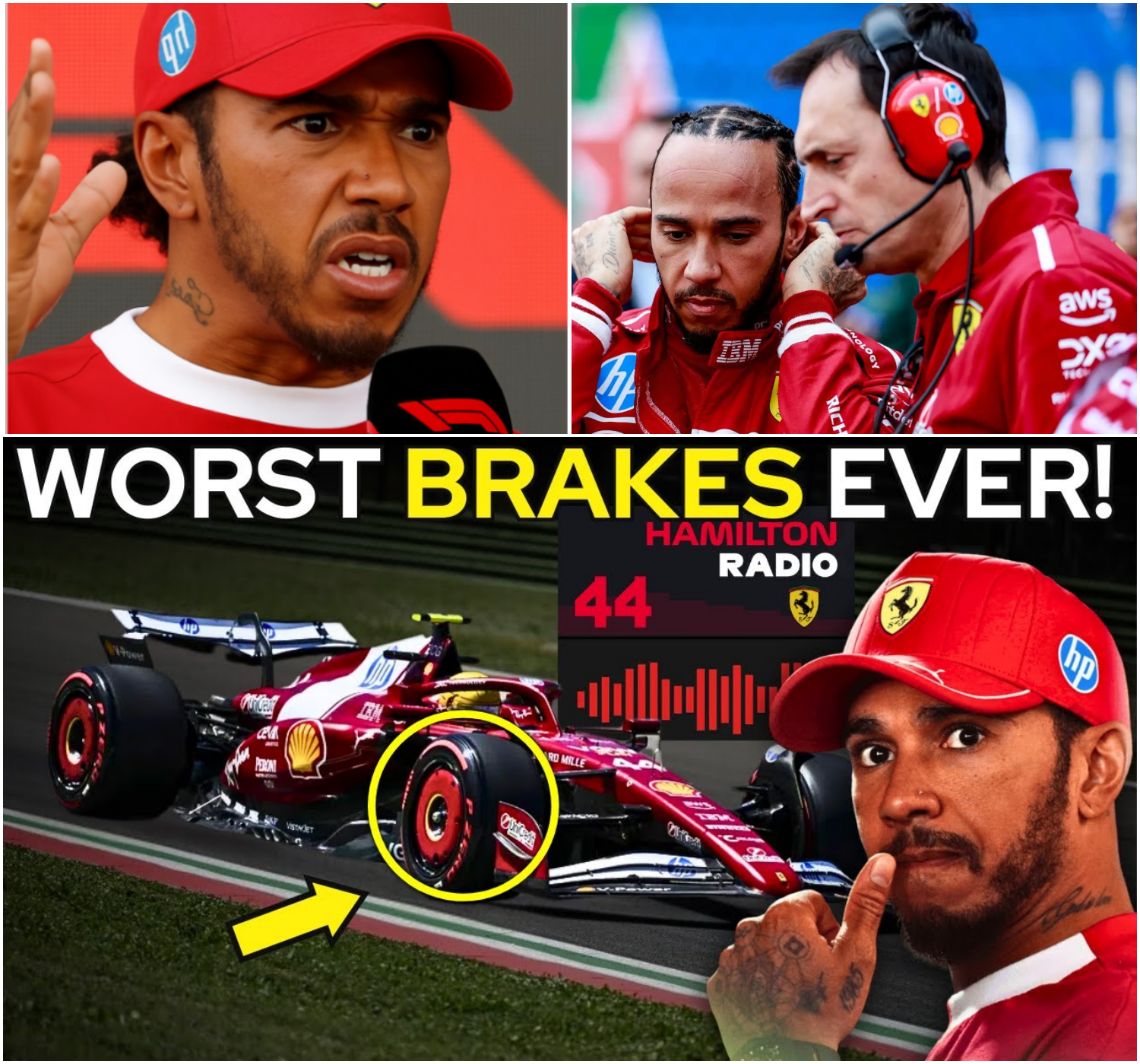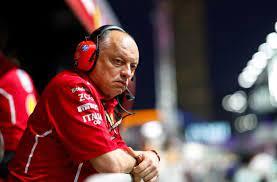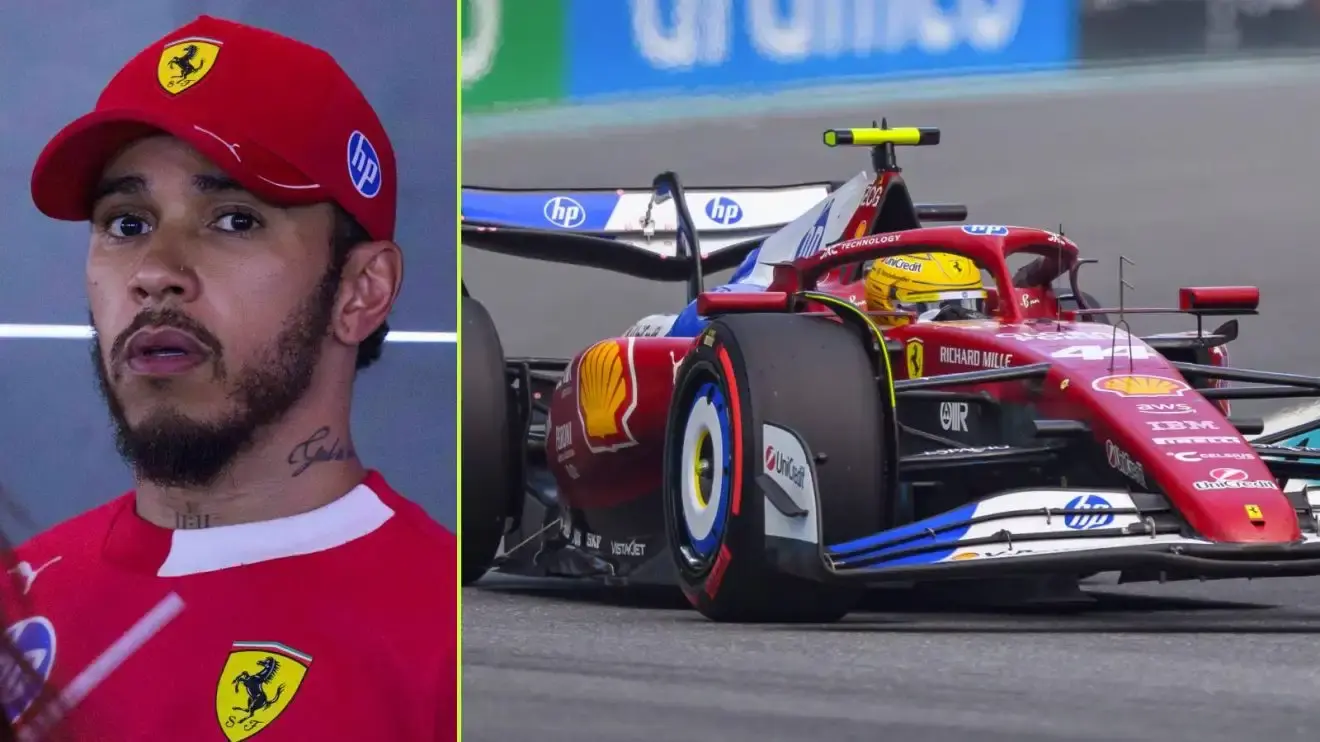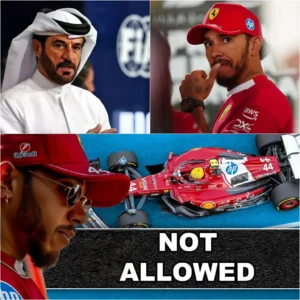The Emilia-Romagna Grand Prix, held at the iconic Imola circuit, was the scene of yet another tense chapter in the 2025 Formula 1 season. Ferrari, which was already facing criticism for its underwhelming performance, saw the situation worsen with a controversy involving Lewis Hamilton and his race engineer, Riccardo Adami. During qualifying, a brake failure on Hamilton’s car exposed communication failures and questionable decisions, culminating in an ignored appeal that left the seven-time champion visibly frustrated. Let’s analyze what happened and why this episode is generating such repercussions.

The qualifying session at Imola was a nightmare for Ferrari. Charles Leclerc finished 11th, while Lewis Hamilton, in his first season with the Scuderia, only managed 12th – a disastrous result for the team racing on home soil in front of thousands of tifosi. The Imola track, known for its technical demands, revealed the weaknesses of the SF-25 car, which, according to experts, is not suited to Hamilton’s driving style. But what really caught the eye was the braking crisis faced by Hamilton, which compromised his performance and exposed internal tensions within the team.
During Q2, Hamilton radioed that he was experiencing significant brake problems, with the brakes overheating and losing efficiency. “The brakes are failing, I can’t keep up the pace!” the Briton exclaimed in an urgent tone. He called for immediate adjustments to the set-up or a strategy to mitigate the problem, but Riccardo Adami’s response was evasive: “We’re looking at it, Lewis, keep it up.” This lack of direct action angered Hamilton, who, after the session, described the situation as “a lottery” and said he had never faced such a serious brake problem in his career.

The relationship between Hamilton and Adami has been marked by ups and downs since the start of the season. After 12 years working with Peter Bonnington at Mercedes, Hamilton is still adapting to the communication style of Adami, who previously engineered Sebastian Vettel and Carlos Sainz. Previous incidents, such as heated exchanges at the Australian Grand Prix and Hamilton’s ironic remarks at the Miami Grand Prix (“Take a tea break!”), show that the rapport between driver and engineer is far from ideal.
In Imola, the brake crisis required a quick response, but Adami’s hesitation to make a clear decision made the situation worse. Sources close to the team suggest Ferrari were torn between trying to salvage Hamilton’s fast lap and avoiding adjustments that could further compromise the car. This indecision cost them dearly: Hamilton failed to advance to Q3, and Ferrari lost the chance to fight for the top positions in its home race.
After qualifying, Hamilton did not hide his disappointment. In interviews, he said that Ferrari represented “the biggest challenge” of his career, highlighting the difficulties of adapting to the car and the team’s dynamics. “I knew it would be tough, but I didn’t imagine it would be like this. We are fighting, but we need to make quicker decisions,” said the seven-time champion. Despite his frustration, Hamilton tried to maintain a diplomatic tone, avoiding direct criticism of Adami, but his body language in the paddock – where he almost “ran over” a journalist with a scooter – revealed how shaken he was.
Ferrari boss Frédéric Vasseur defended the team, saying that “mistakes are part of the process” and that the brakes issue would be investigated. Vasseur also hit back at criticism of Hamilton’s performance, calling the idea that Ferrari was in freefall “nonsense”. However, the lack of concrete results – Hamilton’s only win came in the sprint race in China – is increasing the pressure on the team.

With Hamilton and Leclerc both starting outside the top 10, Ferrari faces a monumental challenge in Sunday’s race (18). Imola has few overtaking spots, and the race pace of McLaren, led by Oscar Piastri, suggests the Scuderia will struggle to make up ground. In addition, the brake crisis raises concerns about the reliability of the SF-25, especially as Ferrari plans upgrades for the Canadian Grand Prix in June.
For Hamilton, the Imola episode is yet another obstacle in a season of adaptation. Despite the difficulties, he remains confident: “I still have fire inside me. I won’t give up.” The Brazilian fans, in turn, continue to follow the performance of Gabriel Bortoleto, who shone by reaching Q2 with Sauber, showing that the future of national motorsports is in good hands.
The Emilia-Romagna GP exposed Ferrari’s weaknesses in 2025: a problematic car, communication failures and slow decisions that cost them dearly. Hamilton’s braking crisis and Riccardo Adami’s insufficient response are symptoms of a team that has yet to find its way. While McLaren dominates and Red Bull remains competitive, Ferrari needs to act quickly to avoid the season turning into a fiasco. For the tifosi, there remains hope that the race will bring some redemption – but in Imola, the path to the podium seems further away than ever.






